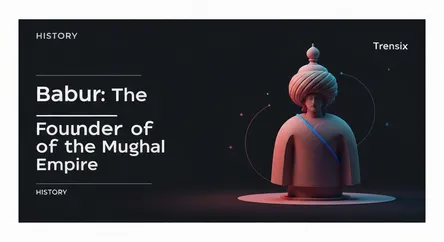History
Babur: The Founder of the Mughal Empire

Explore the life of Babur, the Central Asian conqueror who laid the foundation for the powerful Mughal Empire on the Indian subcontinent.
What is it?
Zahir-ud-din Muhammad Babur (1483-1530) was a military adventurer and the founder of the Mughal Empire in India. A descendant of both Timur (on his father's side) and Genghis Khan (on his mother's side), Babur was a Timurid prince from the Fergana Valley in modern-day Uzbekistan. After losing his ancestral kingdom, he established himself in Kabul. From there, he launched an invasion of the Indian subcontinent. In 1526, he famously defeated Ibrahim Lodi, the Sultan of Delhi, at the First Battle of Panipat, a victory that marked the beginning of Mughal rule in India. Babur was also a gifted writer, and his autobiography, the Baburnama, is a renowned work of literature that offers valuable insights into his life and times.
Why is it trending?
Babur remains a significant historical figure due to the immense empire he founded. The Mughal Empire became a dominant force in India for over three centuries, leaving a profound mark on the region's culture, architecture, and society. His military genius, particularly his use of gunpowder firearms and field artillery, revolutionized warfare in India. Furthermore, his detailed memoirs, the Baburnama, provide a rare and personal account of a 16th-century ruler, making him a subject of continuous academic and popular interest. He is also recognized as a national hero in Uzbekistan and Kyrgyzstan.
How does it affect people?
Babur's legacy is complex and multifaceted. He laid the groundwork for an empire known for its administrative innovations and a rich cultural fusion of Persian, Turkic, and Indian traditions. This blend is evident in the magnificent art and architecture that flourished under his successors, such as the Taj Mahal. His promotion of garden construction, notably the Bagh-e Babur in Kabul where he is buried, introduced a distinct style of landscape design. His reign also initiated a period of significant political and social change on the Indian subcontinent, establishing a dynasty whose influence is still visible in the region's cultural and historical landscape today.